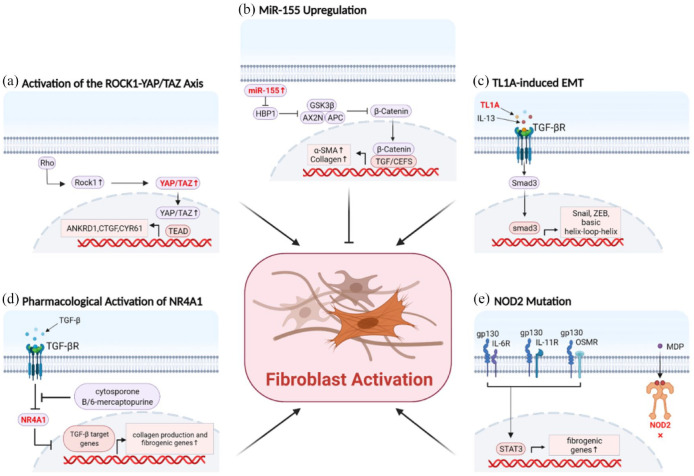Figure 2.
Novel molecules are involved in activation of intestinal fibroblasts. (a) YAP/TAZ activation was dependent on Rho/ROCK signaling pathway, and increased the expression of profibrotic-related genes and proliferation of fibroblasts. (b) The upregulation of miR-155 targeted HBP1 and then activated the Wnt/βcatenin signaling pathway, leading to the activation of fibroblasts. (c) TL1A accompanied with IL-13 induced EMT and activated fibroblasts via TGF-β1/Smad3 pathway. (d) The pharmacological activation of NR4A1 with cytosporone B or 6-mercaptopurine attenuated TGF-β1-induced fibrosis in myofibroblasts. (e) Gp130 family- and STAT3-related genes were highly enriched in NOD2-mutated fibroblasts and macrophages, which led to the differentiation of macrophages into activated fibroblasts.
EMT, epithelial-to-mesenchymal transition; HBP1, HMG-box transcription factor 1; IL, interleukin; NOD2, nucleotide-binding oligomerization domain 2; NR4A1, nuclear receptor 4 A1; ROCK, Rho-associated coiled-coil-containing protein kinase; STAT3, signal transducer and activator of transcription 3; TAZ, transcriptional coactivator with PDZ-binding motif; TGF-β1, transforming growth factor beta 1; TL1A, tumor necrosis factor-like ligand 1A; YAP, Yes-associated protein; α-SMA, α-smooth muscle actin.

